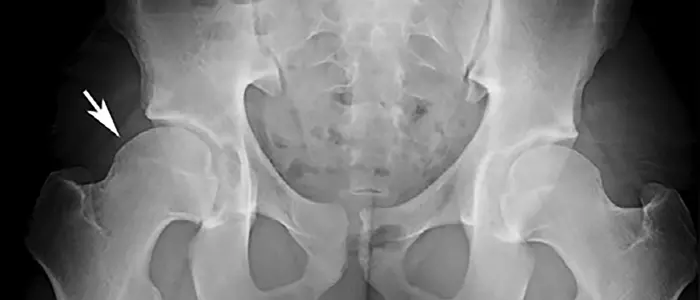- Home
- Research
- Achieving Excellence - Research at Washington University Orthopedics
- Young Adult Hip Deformities
Young Adult Hip Deformities

Caption here.
For more than 15 years, orthopedic researchers at Washington University School of Medicine have been studying the cause and progression of hip disorders with a goal of trying to preserve or extend the function and natural life of the hip for as long as possible.
Research in this field has pinpointed a key issue — hip arthritis later in life is often due to underlying structural abnormalities of the hip that are present at birth or develop during childhood and adolescence.
“These kind of structural abnormalities most commonly include hip dysplasia, which causes an unstable hip because the hip socket is too shallow, or hip impingement, when the socket is too constrained or the femoral head is misshapen,” says John Clohisy, MD, the Daniel C. and Betty B. Viehmann Distinguished Professor in Orthopedic Surgery, Chief of Adult Reconstructive Surgery, and Director of the Adolescent and Young Adult Hip Disorders Center. “By identifying these structural abnormalities earlier in life, we may be able to surgically correct the hip deformity at an earlier age and potentially offset the need for a total hip joint replacement later in life.”
Clohisy is internationally recognized for his clinical research into young adult hip disorders. Early research has helped him to optimize the evaluation of patients with history and examination, X-rays and advanced three-dimensional imaging, which has led to more accurate diagnoses and the establishment of new clinical guidelines for hip preservation procedures.
The latest research is focused on refining hip preservation procedures and understanding the impact of these interventions on patient outcomes. To do that requires a large number of patients to study. In 2008, Clohisy established a multicenter orthopedic study group in North America called the Academic Network of Conservational Hip Outcomes Research (ANCHOR). With nine leading academic institutions involved, the collaborative group recently published their landmark research, which showed that the hip realignment procedure called the periacetabuluar osteotomy (PAO) is generalizable and safe, and improves overall patient pain, functional activity and quality of life.
“PAO has been used since the early 1990s for patients with hip dysplasia,” says Clohisy. “It involves repositioning of the hip socket (acetabulum) to create a more stable joint. Because of the collaborative research, we’ve made substantial progress in identifying which patients can benefit most from the procedure. They are relatively young, physically conditioned and have a fairly healthy articular joint surface with an underlying deformity that is amenable to joint correction. As patients age (40+ years), we have found that we need to be more selective, because the health of the joint is less predictable, which increases the risk for failure and could lead to early total hip replacement.”
In addition to the large-scale ANCHOR study, Clohisy and his colleagues here have just completed a long-term follow-up study of their own patients who underwent the PAO and found that results have been excellent, with survivorship of the natural hip at 95 percent after 10 years and 92 percent after 15 years. “We’re very encouraged by these outcomes,” he says. “Over the years we have refined the procedure to include hip arthroscopy in combination with PAO as well as treating secondary impingement at the time of PAO, both of which could improve long-term outcomes even further.”
With more than 300,000 people each year undergoing total hip replacement surgery, the ability to offset that by making structural changes early in life could have a dramatic impact.
“Collectively, my colleagues and I have made major contributions in terms of early diagnosis and refinement of surgical procedures to preserve the natural hip joint as well as improve the safety of hip preservation procedures,” says Clohisy. “These refinements have been associated with improved outcomes, decreased pain, increased activity and improved function.”
He adds, “The ultimate goal of our work is to continue to refine hip preservation treatments with the hope of preventing hip osteoarthritis over a patient’s lifetime.”
Next article: Rotator Cuff Injuries